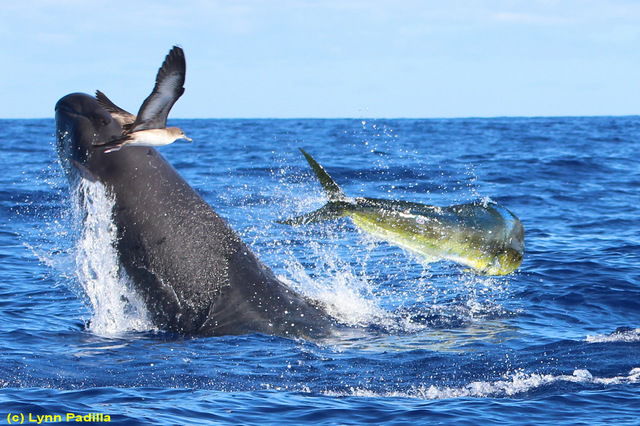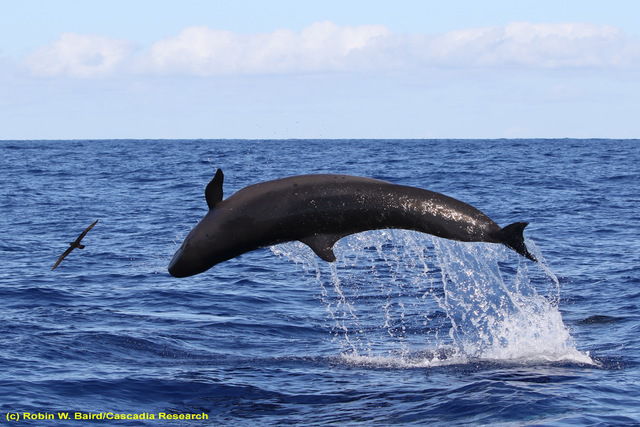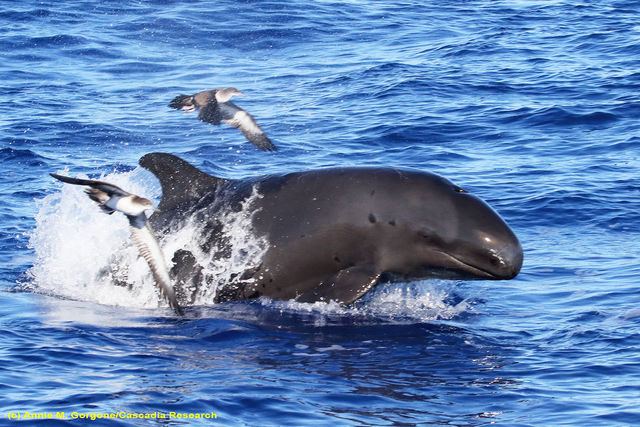PORT ALLEN — A pod of false killer whales spent a record 11 consecutive days circumnavigating Kauai and Ni’ihau in November.
And while people marveled at the humpback whales that are starting to make their annual return to the waters around the islands, the endangered false killer whales went unnoticed.
In fact, representatives from five different charter companies operating on Kauai said the people on their tours have seen multiple humpback whales, but no one reported a false killer whale sighting.
But the whales came from Oahu’s waters, went by the north side of Kauai, went around Ni’ihau three or four times, and then crossed the channel again to circle Kauai five or six times before going back toward Oahu.
All of this happened in the days surrounding Nov. 20.
Robin Baird, who has been monitoring the whales with Cascadia Research Collective using satellite locator tags, said he hasn’t seen any reports of the false killer whales from Kauai, but he’d welcome news of sightings.
“Certainly they were close enough to shore off of Kilauea Point,” Baird said. “That was probably one of the best places to see them and it’s possible some boaters may have seen them.”
Obtaining photos is useful for research, Baird said, because only a handful of the false killer whales are tagged.
“The one tagged individual is probably with 10 or 20 others and this (photographic evidence) helps us track new calves that are being born or for finding individuals that we haven’t seen in a long time,” Baird said.
False killer whales are the rarest of the archipelago’s 11 different resident whale and dolphin species, with numbers estimated to be between 150 and 200 individuals.
“Of the resident species, they have the widest range of movement,” Baird said. “And they’re fast. False killer whales can go from Hilo to Kauai in four days if they want to.”
Baird explained there are two different groups within the false killer whales around the islands — those that hang out around the Northwestern Hawaiian Islands and the Main Hawaiian Island group.
It’s the group from the Main Hawaiian Islands that took a trip to Kauai and Ni’ihau.
“In our work off Kauai, we’ve only seen the endangered Main Hawaiian Island false killer whales on one occasion,” Baird said. “It’s interesting because we knew that was part of their range, but we would have said they visit rarely.”
He continued: “What this shows us is while they visit Kauai and Ni’ihau rarely, when they do, they spend a lot of time.”
The best current theory for the change in behavior is that the false killer whales were following prey — which are species like mahimahi, ahi, and ono.
“Unlike some other species, they hunt big game fish and they hunt during the day,” Baird said. “When they’re hunting they often leap out of the water.”
Occasionally, a mahimahi decides to hide under a boat, Baird said, and that’s when the vessel’s occupants can watch false killer whales swim up right under the boat to catch their prey.
“They can come in very close to shore and there’s been sightings of them in 150 feet of water,” Baird said.
Researchers have embarked on a study of the species, trying to “understand every aspect of their lives,” Baird said.
“We are trying to figure out what they’re feeding on, finding the sex ratio and how different social groups are related, where they spend their time, and how the population is doing in general,” Baird said.




